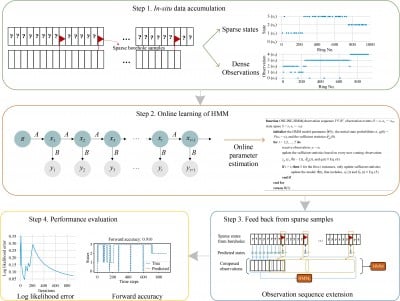Science
Predicting Geological Risks in Tunnel Excavation Using AI

The growing field of tunnel engineering faces significant challenges due to geological hazards such as collapses, water inrush, and landslides during excavation. These risks pose serious threats to construction safety and can lead to project delays, increased costs, and potential casualties. Accurate prediction of geological risks has become essential for preventing geohazards and ensuring safe construction processes.
Traditional geological prospecting methods have shown limitations. For instance, borehole logging generates relatively accurate data but provides information that is often sparsely sampled. On the other hand, non-invasive techniques like seismic methods offer high spatial resolution but frequently lack the necessary accuracy for effective risk assessment. Conventional machine learning approaches used for geological risk prediction also face hurdles, particularly due to the limited availability of data during the early stages of construction. Furthermore, these methods often fail to adaptively update as new data streams become available.
To address these challenges, researchers have explored the integration of online learning techniques with the Hidden Markov Model (HMM) for predicting geological risks. This innovative approach seeks to enhance the accuracy of predictions by continuously learning from new data inputs. By leveraging real-time data streams, the model can adapt to changing geological conditions, thereby improving decision-making during tunnel excavation.
The advantages of utilizing online learning combined with HMM are particularly noteworthy. This method allows for the assimilation of vast amounts of data over time, enabling construction teams to make informed decisions based on the most current information available. As a result, the potential for accidents may be significantly reduced, translating into improved safety and efficiency in tunnel projects.
Moreover, the application of this technology is timely. With the global demand for infrastructure development on the rise, implementing advanced predictive models can lead to substantial cost savings. By avoiding delays and reducing the likelihood of hazardous incidents, projects can stay on schedule and within budget.
In conclusion, the integration of online learning and the Hidden Markov Model represents a significant advancement in the field of geological risk prediction in tunnel excavation. This approach not only addresses the limitations of traditional methods but also enhances the safety and efficiency of construction operations. The ongoing development and refinement of these predictive technologies will be crucial as the industry continues to evolve and face the complexities of geological challenges.
-

 Technology5 months ago
Technology5 months agoDiscover the Top 10 Calorie Counting Apps of 2025
-

 Health3 months ago
Health3 months agoBella Hadid Shares Health Update After Treatment for Lyme Disease
-

 Health3 months ago
Health3 months agoErin Bates Shares Recovery Update Following Sepsis Complications
-

 Technology4 months ago
Technology4 months agoDiscover How to Reverse Image Search Using ChatGPT Effortlessly
-

 Technology1 month ago
Technology1 month agoDiscover 2025’s Top GPUs for Exceptional 4K Gaming Performance
-

 Technology3 months ago
Technology3 months agoElectric Moto Influencer Surronster Arrested in Tijuana
-

 Technology5 months ago
Technology5 months agoMeta Initiates $60B AI Data Center Expansion, Starting in Ohio
-

 Technology5 months ago
Technology5 months agoRecovering a Suspended TikTok Account: A Step-by-Step Guide
-

 Health4 months ago
Health4 months agoTested: Rab Firewall Mountain Jacket Survives Harsh Conditions
-

 Lifestyle5 months ago
Lifestyle5 months agoBelton Family Reunites After Daughter Survives Hill Country Floods
-

 Technology4 months ago
Technology4 months agoHarmonic Launches AI Chatbot App to Transform Mathematical Reasoning
-

 Health3 months ago
Health3 months agoAnalysts Project Stronger Growth for Apple’s iPhone 17 Lineup









